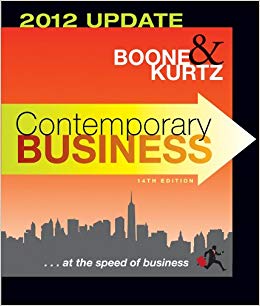1. Do you think TOMS One for One business model is sustainable in the long term? Why...
Question:
1. Do you think TOMS’ One for One business model is sustainable in the long term? Why or why not?
2. Mycoskie says his customers provide “the best type of marketing you can have” because when asked about their footwear, “they never say ‘TOMS.’ They tell the whole story. They say, ‘When I bought this pair of shoes, a child got a pair.’ ” What lesson do you think other socially responsible firms can learn from TOMS’ business practices?
On a trip to Argentina, a young U.S. entrepreneur named Blake Mycoskie saw firsthand how a simple pair of shoes, beyond the means of many of the world’s poor, could provide everything from the ability to attend school to protection from life-threatening infections. Moved by the experience, Mycoskie had a striking insight: that a revenue based business was more likely than a charity to sustain itself over the long term. And so TOMS Shoes was born.
TOMS Shoes, which stands for “tomorrow’s shoes,” makes simple, lightweight, and inexpensive but stylish shoes with a unique business model called One for One. For every pair it sells, TOMS gives a pair of shoes away to a child in need somewhere in the world. In just a few years it has given away some 400,000 pairs of shoes to kids in Argentina, South Africa, Ethiopia, and the United States, 28 countries in all. Some were able to own shoes for the first time in their lives. “When you give some of these children a pair of shoes,” says Mycoskie, “ . . . it is like a prized possession. It’s not an accessory. It’s a necessity, really.”
To those who have difficulty understanding his business model, Mycoskie tells this story: “I got to meet Bill Gates. And he said, ‘You know, 50 percent of the infectious diseases in the world can be prevented by two things. Toilets and shoes. So, keep doing what you’re doing.’ ”
With only 50 full-time employees and a crew of enthusiastic volunteers, TOMS recently turned its first profit, in a year in which it hoped to give away another 300,000 pairs. Several times a year, Mycoskie himself travels with several employees to different parts of the world to lead ”shoe drops.” He says it’s the best part of his job. “When we’re in these countries, we are in the field at least once a day hand-placing shoes on kids’ feet. It’s really important for us to go back and do that. It’s a renewable energy source for me.” On these trips, Mycoskie also meets with representatives from local public-health organizations.
TOMS’ current focus is on preventing a debilitating soil-borne disease, common in Ethiopia, which attacks the lymphatic system, effectively isolating its victims who are mostly women and children. Simply wearing shoes prevents the transmission of the disease. Donated shoes are also helping to prevent hookworm in Guatemala. And children who wear shoes can more readily walk to school.
To give away more shoes, of course, TOMS must sell more. Its products have been featured in Teen Vogue, Marie Claire, Star, and LA Confidential magazines and promoted through “shoe drops,” a pop-up store (a temporary retail outlet backed by a marketing blitz), fashion shows, campus appearances, and other trendy events. The company has extended its original canvas espadrilles (modeled on Argentinean alpargatas), to include more styles and colors for men and women, and a kids’ line called Youth TOMS.
Mycoskie, who recently gave away most of his possessions to live on a small sailboat docked on the California coast, keeps his entrepreneurial hand in everything the company does. “It turns out doing the things you enjoy and having fun with them often create the best message.”
Step by Step Answer:

Contemporary business 2012 update
ISBN: 978-1118010303
14th edition
Authors: Louis E. Boone, David L. Kurtz





